The Basics of Aquascaping
You've decided to setup a planted tank. You've selected your lighting, to CO2 or not to CO2, your substrate, your hardscape, and your plants. You setup your tank and then you stop for a moment and ask yourself...
"Where do I put all of these plants?"
"What do I do with this chunk of wood?"
"Where do I put these rocks?"
"Why doesn't this look right?"
Many aquascapers will tell you, growing plants isn't the hard part of the Planted tank hobby, making a decent scape is.
 Many will spend hours getting the position of hardscape just right. And the plants haven't even been introduced yet.
Many will spend hours getting the position of hardscape just right. And the plants haven't even been introduced yet. This thread is meant to gently introduce you to some of the basic principles behind scaping a Planted tank. Plant and hardscape placement, special ratios, and different styles of Aquascaping will be introduced. The different styles of aquascaping will be showcased using Planted tanks by our own members.
Some Very General Ideas



The Golden Ratio and Creating a Focal Point

In the diagram below, point C divides the line in such a way that the ratio of AC to CB is equal to the ratio of AB to AC. Some elementary algebra (yeah, I know, sorry) shows that in this case the ratio of AC to CB is equal to the irrational number 1.618 (precisely half the sum of 1 and the square root of 5), also known by the symbol


Here is the formula for


This ratio is featured in great artwork and many natural phenomena. Why do we want to impliment it in Planted tanks? This has to do with the creation of a focal point. A place where the eye settles on a scape. Others aspects of the aquascape should lead the eye to the focal. point. If a focal point is not present, the eye wanders, and the tank can be stressful to look at. Below is another way too look at the formula that will allow for some simple computation. Computation, that, in my opinion, is easier to follow...

a + b = the length of your tank. We know the approximate number for

24"/a = 1.618 (approximately remember this is an irrational number) a = about 14.8"
One could further refine this position by calculating the where the golden ratio would be in accordance to the tank width.
Say your tank is 12" wide. Plug in your numbers...
12"/a = 1.618 becomes a = about 7.4"
So what is my point?

A bit More on Focal Points
What are some guidelines to creating a good focal point in a Planted tank?

Most of the major styles of aquascaping will utilize the creation of focal points and the implementation of the Golden ratio, whether the style is Nature, Jungle, or Iwagumi. Dutch scapes will employ a different set of rules, based on thirds.
Three Simple Scapes

The jungle scape is one of the simplest scapes to create. The idea is to create the look of lush growth typically associated with, well, a jungle! Other than possibly adhering to basic scaping ideas (Tall vs. short, plant groupings, and maybe a focal point), the jungle scape is far more flexible with regard to overall scheme. Wild growth is often encouraged and these tanks become quite dense with vegetation. In many instances, the plants are simply left to their own devices. Or, plants can be carefully placed. While not the most complex of layouts, with time, the jungle scape matures to become an impressive tank that is full of activity. Jungle scapes also tend to last longer and require less maintenance. Many fish species also prefer the denser vegetation found in the jungle scape.
Supercoley's Jungle scape - August 2009

Aaronnorth's scape - posted December 2009.
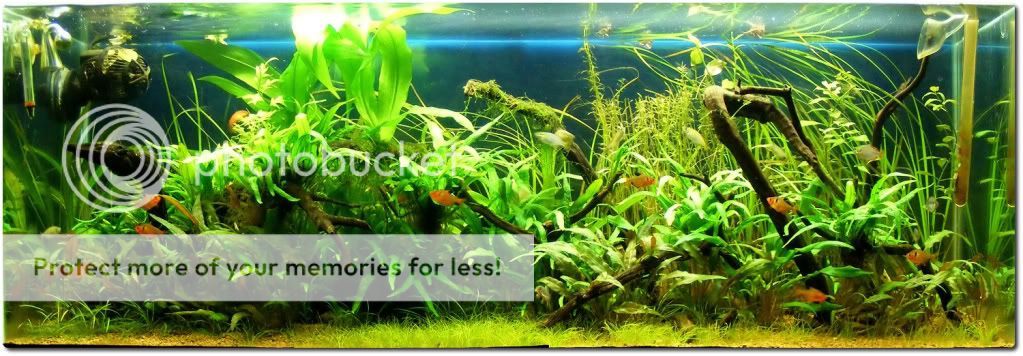

Another scape great for beginners to try is the triangle scape. Instead of spreading the taller plants throughout the entire background of the tank, taller plants are placed behind the focal point plant or hardscape concentrated on one side of the tank. Usually surrounding the area of Golden ratio. Hardscape or focal point plants then radiate outwards from the taller background plants to form a right triangle. Low-lying foreground plants will compliment this look and draw the eye to the focal point. For this scape to work well, the focal point of the tank must be within the background of taller plants or in the area of maximum height of the triangle.
George Farmer's 80cm - Mother Microsorium

Aaronnorth's 60l "The Forgotten Valley" - posted January 2009
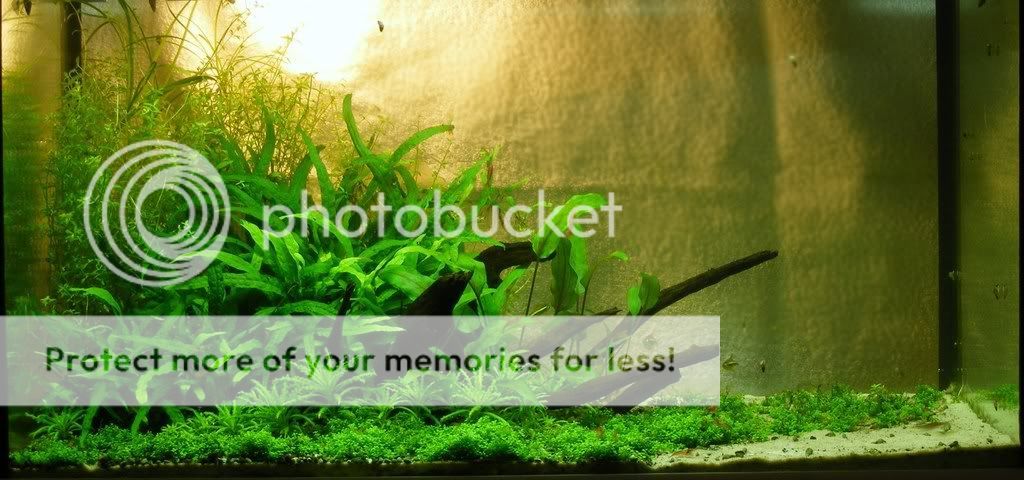

Shift the harscape and taller plants from the edge of the tank more towards the middle, curtail your use of foreground plants, and you have what is called an Island Scape. Island scapes will often use plant collections to immitate the look of a tree stump surrounded by various species (mosses, ferns, etc). The plants are selected to compliment the hardscape, which is typically wood.
DevUK's 60cm - posted June 2009


I would add that whilst the Jungle scape can seem 'simple to create' that you do need to get it right from the off as it can very quickly just become a mess. A knowledge of the plants used in respect to how they grow in height and spread is needed or you can end up with huge plants overpowering the smaller plants and eventually just have a couple of species surviving.
Another key thing is that for a fully fledged Hi-tec jungle scape all the parameters need to be perfect due to the high plant mass. Circulation gets more problematic the higher the content of the aquarium and huge plant mass means more obstruction to the circulation. Very high turnover using large filters and circulation pumps are a necessity if the scape is hitec to ensure that CO2 and nutrients are distributed well as there will be many more dead spots appearing with low circulation as the plants grow and grow.
As an example my scape on P1 started with just under 6x turnover and as it grew in it had algae problems. I increased it with a circulation pump to nearly 20x turnover and the algae disappeared within a week as the CO2 and nutrient delivery improved. Now the tank is non CO2, no nutrient addition and lower light I have returned to just the 6x turnover. The algae has not returned though.
Many people do use high turnover in all scapes even a low Iwagumi. More of a better safe than sorry approach in my eyes as there shouldn't be as much of a circulation/flow issue in these types of scape.
AC
The Dutch Style of Aquascaping
The Dutch style of Aquascaping originated in the early 20th century and is the oldest of the "Aquascaping Schools". As this is an old school, there are many details that are beyond the scope of this basic thread, but some typical features of the Dutch scape include.






George Farmer's 80cm - Dutch Flavour

lljdma06's 8g Dutch - 2007
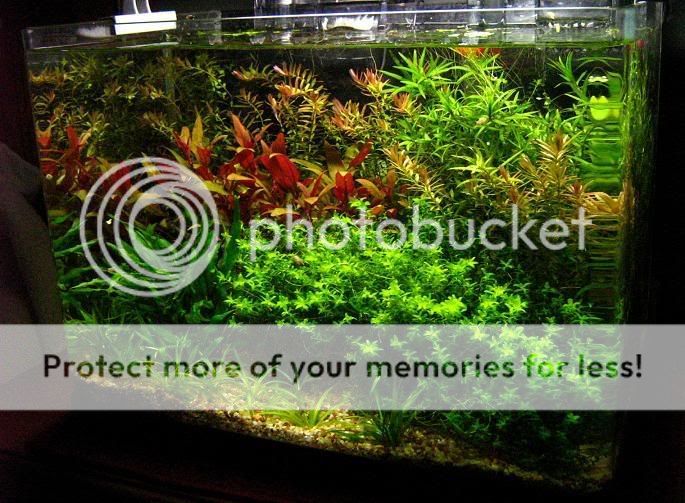
The Nature Style of Aquascaping
The Nature style of Aquascaping is based on the style of aquascaping pioneered by Takashi Amano, beginning in the 1990s. Rather than create the look of a well-manicured garden like the Dutch style, in the Nature style, a scene is created that represents a landscape or image from the natural world. Aquariums that implement this style of scaping will often create the impression of rainforests, mountains, valleys, woodland floors, and hillsides. A typical Nature style aquarium has the following features.




Saintly's Autumn Blush posted June 2009
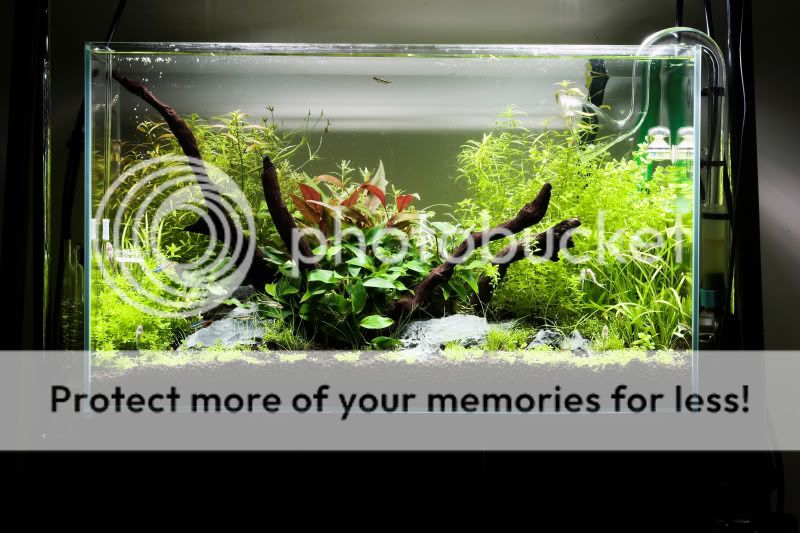
Nature style layout from Saintly - September 2008
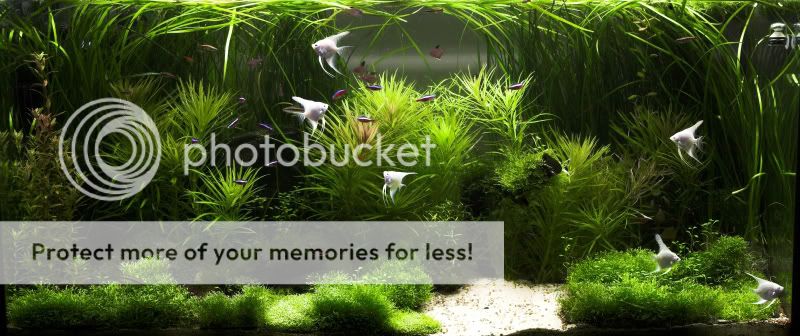

MoondustBob's "without Foundation" - April 2009.

Iwagumi
An off-shoot of the Nature style scape is the Iwagumi scape. Iwagumi literally means "rock formation" and the arrangement of the rocks is of utmost importance. Some typical features of the Iwagumi scape include.





Adandrew's 35L - posted October 2009

George Farmer's 30cm - Meadow Zephyr

Ian's 15ltr cube iwagumi
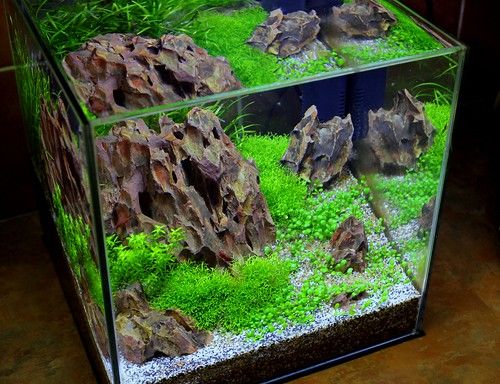
snap shot by Ian Holdich, on Flickr
Concluding Notes
This is by no means meant to be a comprehensive list of the various styles of scapes. Many hobbiest's scapes end up being hybrids of the various scapes discussed. I have also omitted many details. This is meant to be used as a spring board and a source of inspiration. A basic, basic guide. You can create as simple or as complex a scape as you would like. If you follow the basic principles in the beginning, you'll still create a lovely scape. If you want more of a challenge, the Iwagumi, Nature, and Dutch styles offer great rewards. Have fun and enjoy aquascaping!Please, comments and suggestions are always welcome and I will make updates to this thread as styles change.



 My 20gal has its hardscape, I just haven't seen it in a year...
My 20gal has its hardscape, I just haven't seen it in a year...